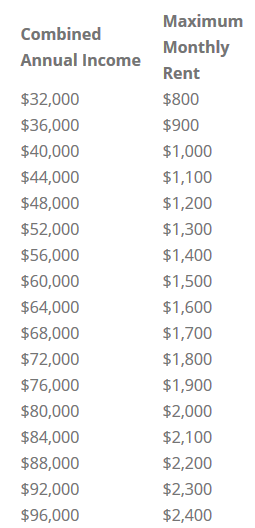
We all wish it would be our bank accounts that would gain a few pounds this holiday season, but alas, that's usually not the case. Here's a list of 15 ways to keep your wallets a little plumper.
1. Make a list, check it twice
Make a list of all the people to whom you'll give a gift (naughty and nice points optional). Along with gift ideas for each person, jot down a ballpark cost of each present. Then, tally all your costs up and adjust your gift giving accordingly so you don't break the bank (you might end up shooting for gifts $10 cheaper than originally planned, for instance). Seeing the big number on paper could help set your gift giving to budget-friendly levels.
2. Add up other holiday costs
I love all the extra trimmings for Christmas, don't get me wrong, but they do cost a few dollars. Don't forget about added costs like a tree, new clothes for a holiday party, cute gift wrapping, Christmas cards, and extra food and drinks for holiday parties. If you're looking for ways to trim the budget, this area is ripe for slimming. Consider getting a smaller tree or you could look for your new dress on a discount site instead of buying it full-price at Nordstrom.
3. Buy some generic gifts on sale
When you're shopping around and see a great deal on something cute and general like candles, lotions, notebooks, etc., pick up a couple and store them away for a rainy day (or more likely for a snowy one). I inevitably forget someone or am surprised by a gift and it's nice to have something stress-free and sweet on hand to give in return. If you don't have this problem, these little gadgets make nice hostess gifts as well.
4. Sign up for your favorite brand's email lists
It's not too late for Cyber Monday gems. Companies are most likely doing deals around this time of the year, and if you're on the email list you'll be the first to know. It's a quick and painless way to get discounts and you can unsubscribe whenever you want.
5. Don't forget about your Thanksgiving takeaways
Thanksgiving comes at an ironic time to the holiday shopping season. Don't forget the simple joys of being with family and all the things you have to be thankful about (and sometimes that new pair of shoes becomes a little less important).
6. Less is more for holiday decor
If you don't have a lot of decorations, 1. that's totally ok and 2. if you want more holiday decor, you could save a lot of money if you wait to buy it until after Christmas and save it for next year. Instead of buying them full price at the beginning of December, you could try to wing it this year with homemade things (snowflakes! candles!) and then buy decor for next year a few days after Christmas when everything is at a steep discount.
7. For a gift exchange with friends, try regifting things you already have
This probably won't fly as well with families or for office exchanges, but if you're trading gifts with a group of friends you could try to make it a regifting exchange. Bring a wonderful or horrible present that you already own and trade for something equally wonderful or horrible. The costs are low and the stories are rich.
8. Try to pull in some extra income
Plan on a high spending month. It's Christmas. It just happens. If you have any side gigs or freelancing talents, this is your month. Be a dogwalker, babysit, sell something you made, sell your old clothes on Poshmark, get creative. Any extra income helps offset the added costs of this (wonderful) season.
9. Shop early
The earlier you finish shopping, the less likely you'll be to binge spend in the final hours of gift buying. Give yourself enough leeway to shop around for deals and to buy your gifts in a less stressful environment than the final hours of Christmas Eve.
10. Buy online
If you haven't discovered the magic of Amazon Prime yet, this is your year. It's the best. You add things to your cart and let them sit while you think on it for a night. You click a button to buy, and it arrives to your doorstep two days later. This saves money from multiple angles: Amazon usually offers great prices, it protects against impulse purchases, and you save time by shopping online and having it delivered (and time is money). Win, win, and win.
11. Give experiences
Two pluses here: 1. Experiences are usually better than gifts. 2. If you're cutting it close, sometimes giving experiences delays you actually purchasing something for the other person (for example, if you're treating your friend to dinner, you might not actually shell out the cash until you and your friend go out, most likely a few weeks after Christmas. This gives you a few extra paychecks of buffer after the Christmas spending hangover).
12. Put Treat Yo' Self on Spending Freeze
Wait until after Christmas to buy yourself presents. You might not be able to resist (I'm very guilty of this), but it is a highly logical way of spending less money this holiday season. Plus, you don't run the risk of buying yourself something that someone else was going to give you.
13. Pull out your best clever gifting game
Creative presents usually mean a lot and they often are a cost-effective approach to give giving. Pinterest is a candy store for this kind of clever gifting, but here are a few other ideas to get your thoughts rolling: make a photobook, write your own children's book, make and give freezer meals, write a letter every month to someone, clean someone's house, detail their car, give your time and muscle to help a relative clear out junk or on house projects; come up with you own!
14. Simplify your season
You don't have to do every Christmas thing ever. Really: your Christmas won't be ruined if you miss your cousin's Christmas pageant or if you didn't send out a holiday photo card. Sometimes it's best to slow down and relax. It's usually friendlier on the wallet too.
15. Give more than you receive
It'll make you rich every time. Don't think of giving only things that cost money. Giving comes in many forms: giving your time, giving your resources, giving your talents. Christmas is best enjoyed when we keep that in perspective and focus on what we can give rather than what we can get.
Happy holidays everyone!












